Page created November 15, 2010
Updated November 29 -
More images added
Dynamic Range Estimate and Chart ... Click here
DR chart EV0 position now correctly identified and a data entry error corrected.
There may be additional images and observations from time to time.
Sample images are at the bottom of this page.
Overview
Pro reviewers are suggesting the D7000 falls somewhere in between the D90 and the D300/D300s. In terms of price this is obviously true. I don't find the classification nearly so easy in other respects. Unlike the D90 the D7000 has a weather protected body featuring a magnesium framework to protect the most vulnerable components. It has a higher resolution sensor than the D300/s at 16 mpx and claims to have lower noise. It has a High Definition movie mode and an improved auto-focus technology. In some very important respects, then, the D7000 is equal to and potentially even superior to the D300 series, at least when it comes to image quality. Where it lacks in the comparison is in variety of features. For example, there are only two user programmable memories as opposed to four and the USB transfer protocol is not manually configurable. You will either have to transfer your NEF files using a card reader or run something like Nikon Transfer 2 (it's free and easy to use). At $600 less than a D300, the D7000 looks like an incredible bargain - if it performs. The minor deficits in flexibility are unlikely to be noticed by most owners and may even prove a benefit as the camera is certainly easier to understand than the D300.
All commentary following is based on inspection of images derived from RAW/NEF source ... no in-camera processing involved. Some of the JPGs posted at the end of the article have been slightly edited for color, contrast etc.
I'm not much interested in pixel-peeping or lab tests. I am happy with a camera if it can satisfy requirements as follows:
- Detail appropriate to the subject.
- Negligibly present defects such as chromatic aberration, noise and mediocre dynamic range. This does not mean total absence of such elements - only that they not serve as distractions.
- The foregoing apparent in a glossy print at maximum dimensions as suggested by the sensor size and pixel density ... at a normal viewing distance. For a typical 10 mpx camera that would mean a fine 11 X 14 glossy at most and for 12 - 16 mpx units, 13 X 19 or even a bit larger.
Field Experiences and Impressions
The D7000 is exceptional. Noticed so far:
Pros (in approximate descending order of importance):
- Auto-focus appears better than on the D300. With the Sigma 150 - 500 mm tele-zoom the former slightly soft 450 to 500 mm zone is now about as sharp as the rest of this great lens ... entirely unexpected but immediately visible. In many images with all lenses, there is additional "snap" in terms of detail which is probably not because of the extra pixels. Conclusion: The D7000 may extract more goodness from your inventory of lenses.
- There's an improvement in noise performance over the D300. ISO 1600 looks as good or better than ISO 800 on the D300. Even ISO 6400 is capable of producing very nice images. In my case there's not a lot of need for this but it is interesting.
- The minor annoyance of that gooey rubber door covering the sockets on the left side of the D300 body has been fixed. On the D300 this never closed properly and was usually left hanging open. The D700 doors are made of the same stuff but a little harder and snap shut easily. A "nit", perhaps, but these things assume an importance after awhile.
- A proper mirror lock-up ... at last.
- If you are used to the D300 the re-learning curve is short. Most of the interface is familiar and you can sort out the differences by trial-and-error.
- Comfortably lighter than the D300.
Cons (in approximate descending order of importance):
- No mass storage USB mode although the Nikon software is very nice to use and free.
- Nothing else worth mentioning so far.
I see some folks already complaining this is not a "pro" body despite the magnesium, the sealing, the mirror lock-up etc. If it can't be chucked against a wall and keep working I could care less. A pro photographer who covers street violence and car chases might want to look elsewhere and spend $9000 on a D3 cannon-ball. Here we are interested mainly in image quality and a standard of endurance appropriate for the owner who respects his equipment.
In Summary
- Important image quality improvements with focus accuracy and high ISO noise level improvements being the most obvious to date. You can readily see the difference.
- With lenses up to the task (the Nikkor 16 - 85 mm amd 12 - 24 mm being examples) excellent for landscapes and other subjects demanding rendition of fine detail.
- Having an extended high ISO capability without problematic noise levels opens new photographic opportunities, whether or not you have cared about this before. Strangely compelling.
- Dynamic range at least as good as anything else with an APS-C sensor (based on my own tests in comparison with lab charts for other cameras posted by pro sites)
- Image and build quality combined with a very attractive price make this an appealing choice for the serious photographer.
Sample Images and Viewing Comments
A computer monitor is a low resolution display capable of rendering about 1/4 the detail possible in a glossy ink-jet print. JPEG compression for the Web may further degrade detail (while smoothing noise). Shadow and highlight detail are differentially compressed with respect to mid-tone areas. You simply can't expect to learn a whole lot about image quality from pictures scaled for ordinary viewing on a monitor or TV. Nevertheless, many photographers now prefer sharing their images on the Internet so JPEG demonstrations still make sense despite the shortcomings. In favor of monitor presentation, self-illumination contributes to a sense of depth and to vivid color saturation. Detail isn't everything.
There is an almost hysterical obsession these days with a digital camera's ability to provide low noise images at high ISO's. In fact, the impression is sometimes obtained that nothing else matters. Most of us never need anything over ISO 400. I suspect many owners try ISO 3200 out of curiosity (or so they can brag about the result ... if it is good) and then never use it again. Nevertheless, there are occasions such as sporting events or indoor photo opportunities where flash cannot be used that call for high sensitivity. Wildlife photographers can also benefit from clean high ISO performance.
In catering for this need-for-speed passion, the images posted below include some high ISO samples derived from RAW/NEF. No noise reduction used. By right clicking an image most browsers will offer an option for viewing EXIF. This information is not always 100% correct. In particular, subject distance is often incorrectly reported.
In conformity with my practice elsewhere, images have been converted from NEF to TIFF, then re-sampled to 100 dpi using bi-cubic interpolation prior to JPEG conversion with 20% compression. On an LCD monitor operating in native mode resolution they should appear as intended. Otherwise they may be too large and present a degraded appearance.
Mt. Kidd - D7000/ISO 500 - Nikkor 16 - 85 mm DX
At this size and pixel density the wealth of fine detail in the original is mostly obscured. The original would easily enlarge to beyond Super A3 while retaining excellent sharpness.
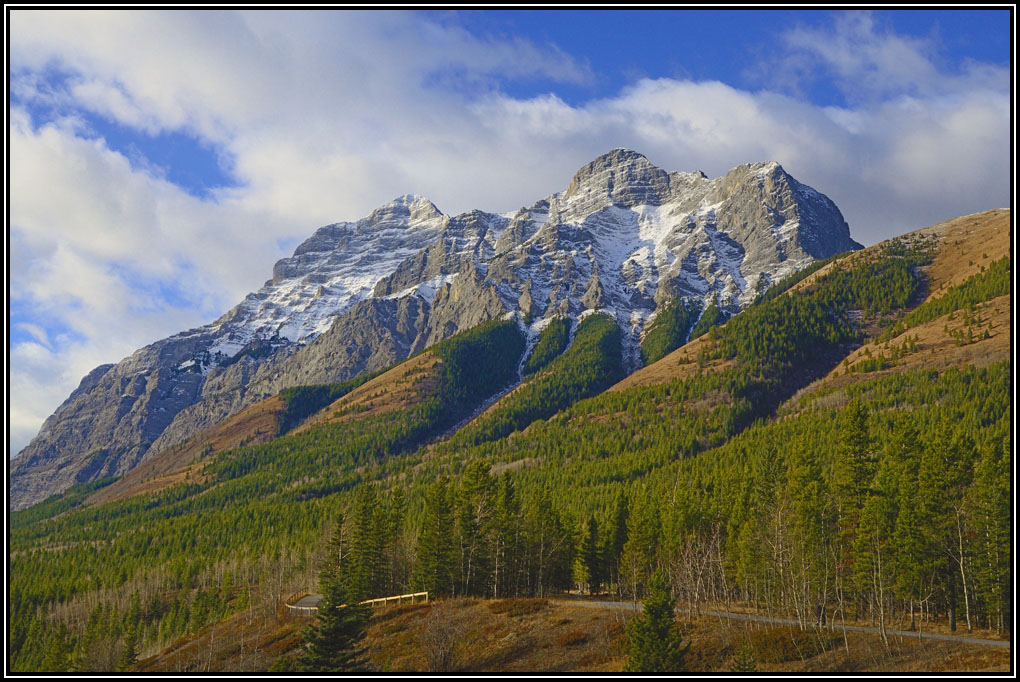
Grand Piano Interior - Hotel Lobby - D7000/ISO 6400 - Nikkor 16 - 85 mm DX
Approximate 40% (linear) crop. Focus is at the center of the image which is why the foreground is slightly blurred. Lighting extremely poor. By no means noise-free but the noise is "Nikon noise" meaning it is fine-grained and uniform. Detail has not been excessively nibbled away. I was taken aback at how good this is, even before any attempt at noise reduction. Maybe high ISO's are good for something after all.
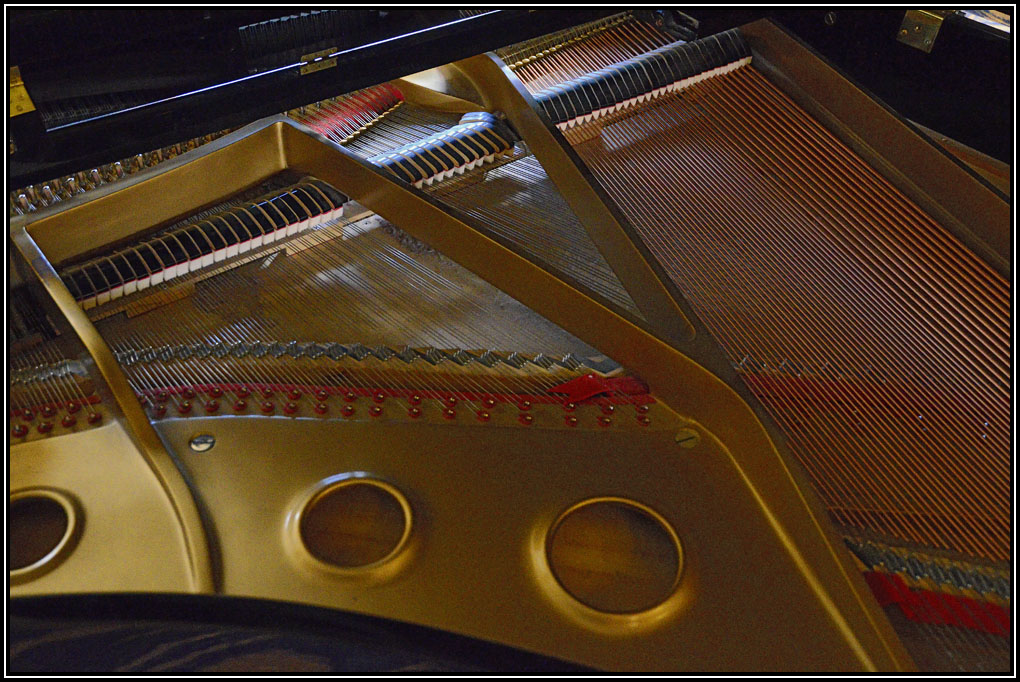
Medieval Clock Replica - D7000/ISO 3200 - Sigma 150 - 500 mm
ISO 3200 more than just "usable". Approximate 30% crop. Range 5 meters (not what's reported in the EXIF). Very subdued indoor lighting. Noise is minimally visible at 100% in the original but disappears at anything less than that. There's some grit visible in the clock hand but this is actually texture in the material itself, not camera noise.
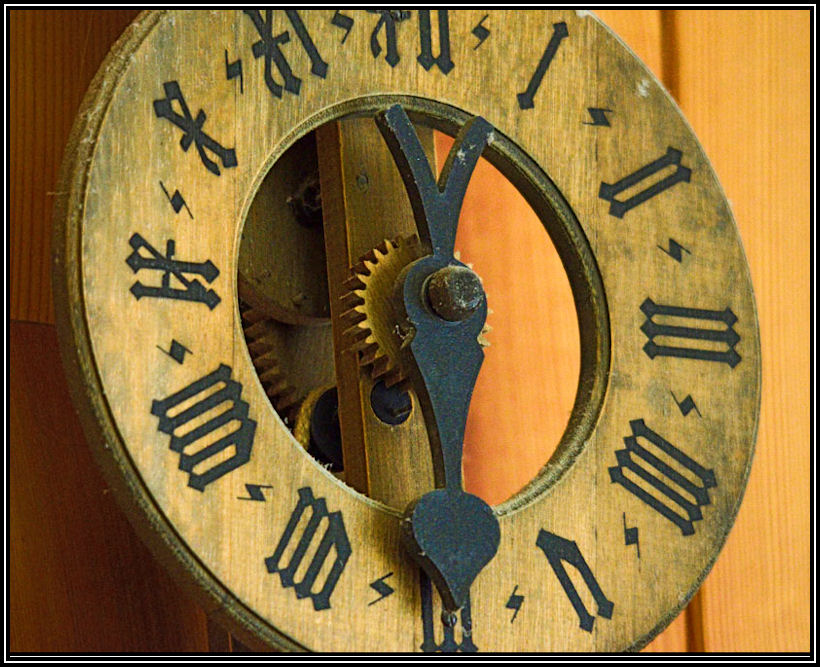
Cushion in Hotel Lobby - D7000/ISO 3200 - Nikkor 16 - 85 mm
Conditions much as with previous images. Fine patterns tend to mask noise so this looks extra good. Even so, a fine performance from this new Nikon.
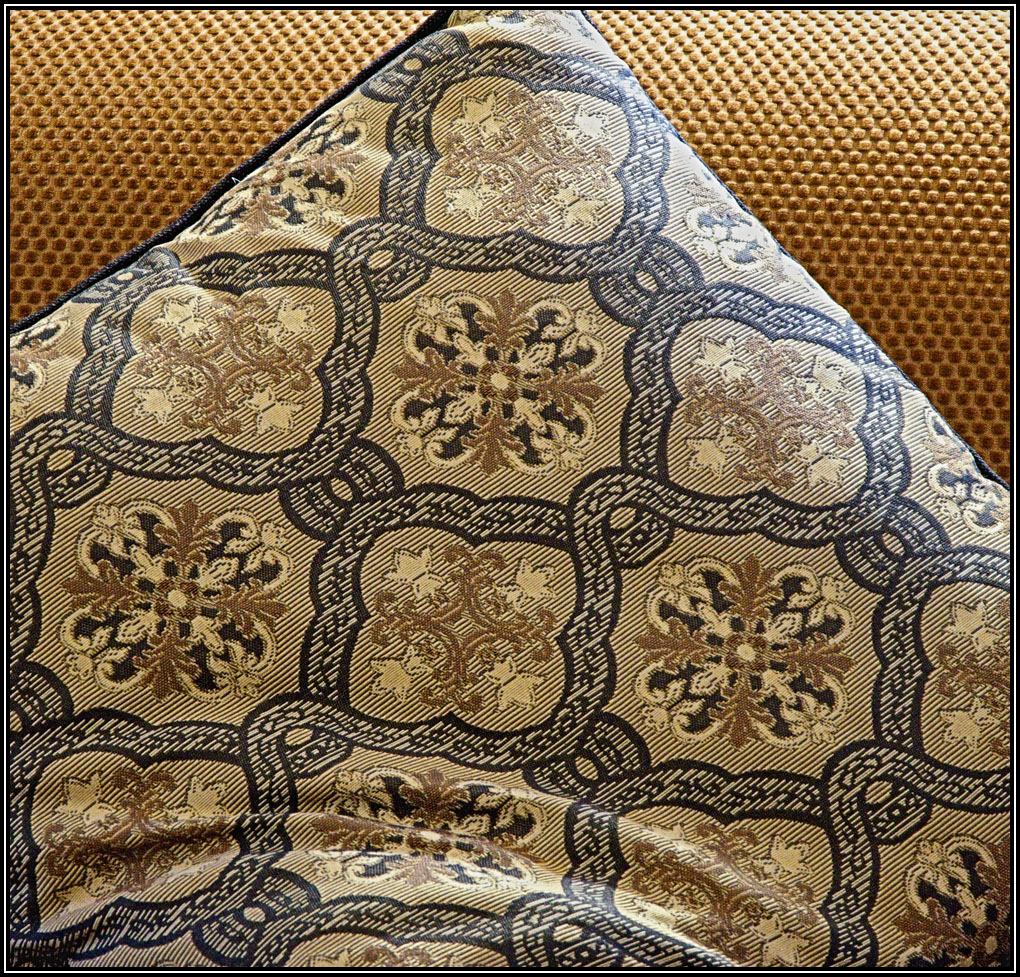
Patio - D7000/ISO 500 - Nikkor 16 - 85 mm
Back to a more sensible ISO
Snowplow
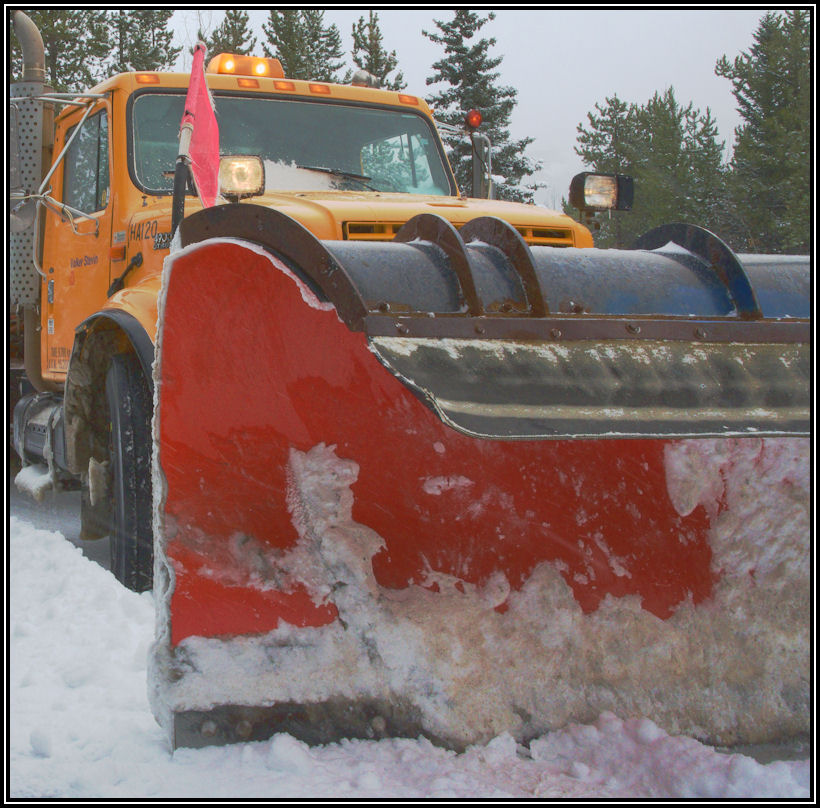
Pub Sign - D7000/ISO 4000 - Nikkor 16 - 85 mm
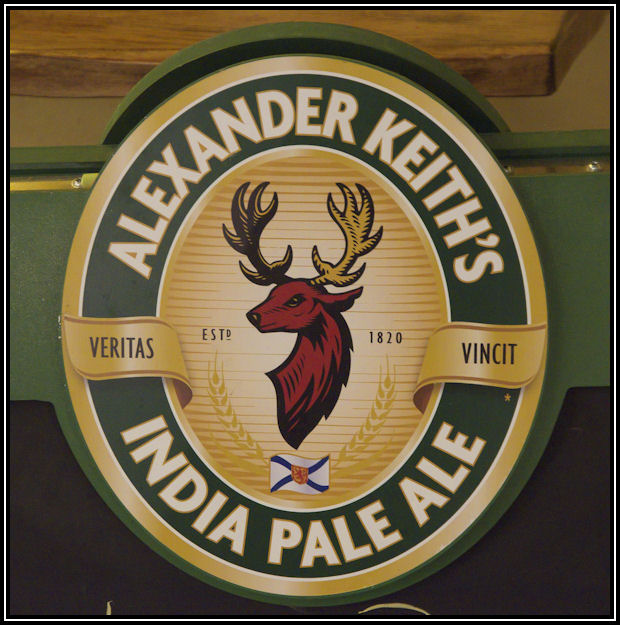
Deer in Courtyard- D7000/ISO 500 - Nikkor 70 - 300 mm (range about 200 ft)
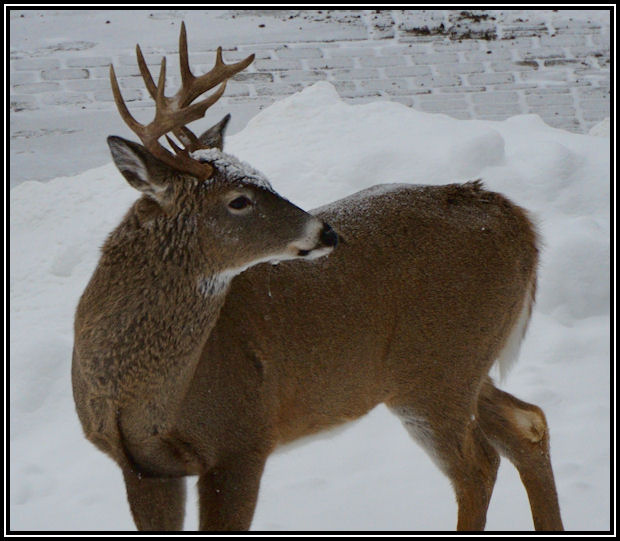
Nikon D7000 review